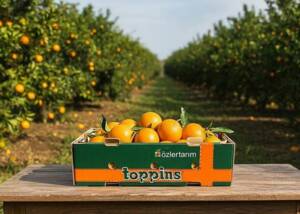Eucalyptus pulp is an important raw material for the production of high-quality papers
News General news
Eucalyptus Pulp: Production, Use, and Sustainability
Eucalyptus pulp is gaining importance as a renewable raw material for paper production. But where does the pulp come from and how sustainable is it really? In this article, you will learn everything worth knowing about the production and use of eucalyptus pulp.

Where are eucalyptus trees grown?
Eucalyptus trees are native to Australia, where there are over 600 different species. Today, they are cultivated in many subtropical regions worldwide, especially in South America, South Africa, Spain, and Portugal.
The most important cultivation countries for eucalyptus for pulp production are:
• Brazil
• Chile
• Portugal
• Spain
• South Africa
• Uruguay
Eucalyptus grows very quickly and can be harvested after just 7-10 years. In comparison, Nordic conifers such as spruce and pine require 60-80 years until harvest. Through coppicing, eucalyptus trees can easily regrow after harvesting without having to be replanted.
How is eucalyptus pulp produced?
For pulp production, mainly the species Eucalyptus globulus and Eucalyptus grandis are used. To produce eucalyptus pulp, the wood is first debarked and chopped into wood chips. The wood chips are then cooked under pressure and high temperature in a chemical process. This dissolves lignin and hemicellulose, leaving the pure cellulose fibers.
Depending on the process, it is referred to as sulfate or sulfite pulp. The resulting pulp is washed, bleached, and dried. The result is white pulp fibers that can be further processed into paper.
Modern pulp mills operate very energy-efficiently and environmentally friendly. All processes run in closed cycles, chemicals are recycled, and wastewater is biologically treated. The energy demand is largely covered by biomass.

For which papers is eucalyptus pulp used?
Eucalyptus pulp has excellent properties for papermaking. The short fibers lead to smooth, even paper surfaces with high whiteness and opacity. Therefore, eucalyptus pulp is preferably used for the following paper grades:
• Printing and copy papers
• Magazine and catalog papers
• Tissue papers such as toilet paper, facial tissues, and kitchen rolls
• Packaging papers and cardboard
Eucalyptus pulp is often combined with long-fiber pulp from softwood to improve strength properties. For high-quality papers with particularly smooth surfaces such as photo printing papers, eucalyptus pulp is indispensable.

How sustainable is eucalyptus pulp?
When cultivated in monocultures, negative ecological consequences such as soil degradation and displacement of natural vegetation can occur. Therefore, it is important that eucalyptus cultivation is done sustainably. Many pulp producers are FSC or PEFC certified and follow strict criteria for responsible forestry.
As a fast-growing raw material, eucalyptus has some ecological advantages:
• High area productivity: On the same area, three times more pulp can be produced than with pines.
• Efficient water use: Eucalyptus can cope with little water and nutrient-poor soils.
• High CO2 sequestration: The rapid growth binds a lot of carbon from the atmosphere.
If eucalyptus is grown on degraded areas, it can even contribute to ecological enhancement. Pulp producers are increasingly committed to protecting natural forests and preserving biodiversity. Some companies like Suzano in Brazil protect 40% of their areas as natural forest.
Conclusion: Eucalyptus pulp is an important raw material for the production of high-quality papers
Eucalyptus pulp has become an important raw material for the production of high-quality papers. Due to its special properties, it is particularly suitable for high-quality printing and tissue papers.
However, the cultivation of eucalyptus must follow strict ecological and social standards to avoid negative impacts. If these criteria are met, eucalyptus pulp can be a sustainable alternative to pulp from domestic forests.










